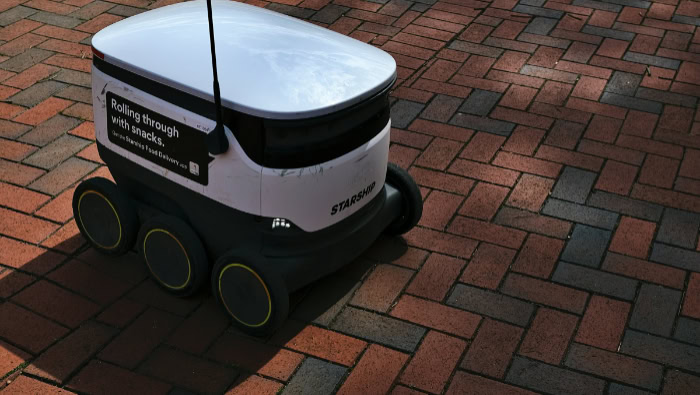The Impact of Artificial Intelligence (AI) On Society

From voice assistants to automated factories, artificial intelligence has swiftly moved from science fiction to an everyday reality. Its influence can be felt across industries, classrooms, hospitals, and even in personal routines, creating both excitement and unease.
While AI promises faster problem-solving and smarter services, it also prompts important debates around job loss, privacy, and how decisions are made. As society adapts to these dramatic changes, recognizing both the rewards and the risks of AI is more vital than ever.
AI’s Transformative Benefits Across Key Sectors
Artificial intelligence is changing the way society works, learns, and heals. Far from being limited to tech companies, its influence now touches nearly every corner of modern life.
Businesses seek out new efficiencies, doctors rely on AI to improve diagnoses, teachers personalize lessons for students, and environmentalists embrace powerful new tools for conservation.
Economic Efficiency and Innovation
AI brings a new level of speed and precision to business operations. Automation handles repetitive tasks in fields such as manufacturing, logistics, and customer service, freeing up workers to focus on more complex, creative, or strategic responsibilities.
Robotic arms on factory floors assemble products with accuracy, while intelligent software sorts and responds to basic customer inquiries twenty-four hours a day.
Data-driven tools enable companies to sift through vast amounts of information, identifying trends and patterns that help optimize supply chains and allocate resources effectively. Retailers use AI to forecast demand, adjust inventory, and streamline deliveries.
Logistics firms improve routes and reduce delays, while financial teams spot market trends and potential risks faster than ever before. Collectively, these advancements fuel greater innovation and allow businesses to adapt quickly in competitive markets.
Advancements in Healthcare
AI is becoming a trusted ally for medical professionals. Advanced algorithms analyze medical images, helping doctors spot early signs of diseases such as cancer with remarkable accuracy.
This not only speeds up diagnosis but can also improve outcomes for patients.
Personalized medicine is another area where AI is making a difference. By scanning a patient’s health data, AI can identify the best treatment options tailored to individual needs.
Drug discovery, traditionally a slow and costly process, now benefits from AI’s ability to sift through millions of molecules and predict which ones are most likely to succeed as future medicines. The result is faster research, more effective treatments, and ultimately, healthier communities.
Education and Accessibility
Schools and universities leverage AI to make learning more personal and effective. Adaptive learning platforms adjust lessons to fit each student’s pace and knowledge level, ensuring that no one falls behind or gets bored with outdated material.
These platforms pay attention to how students interact with content and adjust future lessons accordingly.
Educators also benefit from AI’s capacity to automate administrative tasks like scheduling, grading, and record-keeping. Freed from endless paperwork, teachers can invest more energy into supporting and inspiring their students.
For learners with disabilities, AI-powered tools offer greater access through real-time transcription, language translation, and customized educational resources, fostering a more inclusive environment.
Environmental Sustainability
AI is proving valuable in the fight for a more sustainable planet. Smart grids powered by intelligent algorithms balance energy consumption and production, helping prevent blackouts and reduce waste.
These systems use real-time data to forecast demand and manage renewable resources like solar and wind efficiently.
In the natural world, AI assists with wildlife conservation by analyzing satellite images, tracking animal populations, and detecting illegal activities such as poaching. Predictive analytics also play a role in climate modeling, giving scientists stronger tools to evaluate environmental risks and prepare for natural disasters.
By turning complex data into clear insights, AI supports smarter decisions and more effective actions in the quest to protect ecosystems and combat climate change.
Societal Challenges Posed by AI Adoption

While artificial intelligence offers remarkable benefits, its rapid deployment has sparked serious challenges for individuals, communities, and institutions. New technologies often bring uncertainty, but the scale and complexity of AI’s impact demand thoughtful attention.
Economic Disruption and Inequality
The rise of AI in the workplace disrupts traditional job markets, particularly in sectors such as transportation, manufacturing, and retail. Automated systems and smart machines now handle many tasks once reserved for humans—driving trucks, managing inventory, or supporting customers.
Workers in these sectors may face layoffs or pressure to adapt to new roles, often requiring skills not easily acquired overnight.
A growing skills gap adds another layer of complexity. High-paying jobs in tech, analytics, and AI development remain out of reach for those lacking specialized education or training.
As a result, income inequality can widen, with some regions or communities benefiting from AI-driven growth while others struggle to keep up. Striking a balance between progress and protecting livelihoods remains a pressing concern as technology reshapes the economic landscape.
Ethical and Privacy Concerns
AI systems learn from enormous amounts of data, but those data sets can reflect biases present in society. When AI makes decisions about hiring, loans, or criminal justice, unfair outcomes may occur—favoring or disadvantaging individuals based on race, gender, or income.
Such algorithmic bias presents real dangers, with the potential to reinforce and deepen existing inequalities.
Privacy also becomes a central issue as AI systems collect, analyze, and share vast quantities of personal information. From mass surveillance to targeted advertising, individuals may feel their lives are tracked and evaluated in ways that threaten autonomy and dignity.
Data exploitation remains a risk, especially when regulations struggle to keep pace with innovation. These ethical hurdles challenge lawmakers, businesses, and citizens alike to define acceptable uses of AI.
Security and Misuse Risks
AI opens new doors for cybercriminals and those seeking to manipulate public opinion. Realistic deepfakes—synthetic videos and audio generated by AI—can blur the line between truth and fiction, making it difficult to trust what’s seen and heard in the media.
Such technology can be used to spread misinformation, damage reputations, or even influence elections.
Autonomous weapons and AI-driven cyberattacks introduce further dangers. Machines capable of making lethal decisions or hacking into critical infrastructure raise worries about accountability, safety, and international security.
These risks highlight the urgent need for robust safeguards and international cooperation to prevent harmful uses of AI.
Dependence and Human Agency
Reliance on AI for life-changing decisions in healthcare, finance, or law can reduce individual control and raise questions about who is ultimately responsible when things go wrong. As algorithms take a more prominent role in shaping outcomes, humans may be sidelined or pressured to simply accept machine judgments without deeper scrutiny.
Furthermore, widespread AI adoption could impact creativity and critical thinking. If people turn to AI for answers, solutions, or inspiration too readily, the drive for independent thought and original problem-solving may weaken.
Societies must weigh the trade-offs between efficiency and the preservation of human qualities that drive progress and innovation.
Ethical Frameworks for Responsible AI Development

Responsible development and deployment of artificial intelligence need more than technical expertise—they require clear ethical standards and collaborative effort among experts, regulators, and everyday citizens. Addressing questions of fairness, accountability, and public good helps ensure AI builds trust and serves everyone, not just a select few.
Creating a future where AI remains a force for positive change involves several distinct but connected strategies.
Transparency and Accountability
Clarity in how AI systems make decisions is essential to fostering trust. Explainable AI, often abbreviated as XAI, aims to reveal the reasoning behind automated choices in plain language.
Clear explanations reduce the mystery surrounding how algorithms reach conclusions, especially in high-stakes situations such as healthcare, lending, or judicial processes. Transparent systems allow users and regulators to question, understand, and improve AI outcomes, especially when decisions affect lives or livelihoods.
Legal responsibility adds another layer of accountability. When AI systems malfunction or cause harm, such as an accident involving an autonomous vehicle, clear frameworks help determine who is liable.
Developers, manufacturers, and users each play a role in ensuring technology is safe and used appropriately. Effective legal guidelines push creators to prioritize safety and fairness from design through deployment.
Bias Mitigation Strategies
AI reflects the data it learns from, making bias a persistent risk. Mitigating this problem starts with diversifying the data used to train algorithms.
Datasets that represent many backgrounds, perspectives, and experiences help reduce the chance of unfair outcomes. Regular audits and testing identify systemic issues before machines influence critical decisions.
Inclusive design goes further by involving voices from marginalized communities in the creation and oversight of AI tools. Listening to those most likely to be affected by errors or bias ensures that systems meet society’s broader needs.
Efforts like these move AI past “one-size-fits-all” thinking and toward solutions that benefit everyone.
Policy and Regulation
Rules and standards for AI are necessary to protect privacy, promote fairness, and curb abuse. Privacy laws modeled on frameworks such as GDPR give individuals more control over their personal data and hold organizations accountable for misuse.
Specific regulations for AI address unique risks, such as facial recognition or autonomous decision-making, which traditional laws might overlook.
Global cooperation is essential as AI crosses borders easily. Preventing misuse, especially in areas like autonomous weapons or international disinformation campaigns, demands collective action.
Dialogue among nations, businesses, and advocacy groups helps build standards that keep technology in check while still encouraging innovation.
Public-Private Partnerships
No single sector can address all challenges of AI alone. Collaborative efforts between governments, industry leaders, and non-profit organizations tackle complex issues like disinformation and climate change.
Partnerships share resources, knowledge, and best practices to monitor, govern, and improve AI’s impact. Working together allows society to channel artificial intelligence toward solving pressing global problems while minimizing risks.
Such cooperation ensures that the benefits of AI are distributed more widely and responsibly.
Long-Term Implications for Human-AI Coexistence

Artificial intelligence is not just a fleeting innovation; it is set to shape the structure of society for decades to come. The choices made today about how AI is integrated into daily life will have lasting effects on how people work, learn, communicate, and share in global progress.
Ensuring a positive future means thinking carefully about how humans and intelligent machines will interact, collaborate, and grow together.
Redefining Work and Education
The integration of AI into the workforce is transforming expectations for skills and careers. Automated systems can take over repetitive or hazardous tasks, which can free people to focus on creative, strategic, or interpersonal work.
However, this shift also means some roles may disappear, leaving workers in need of reskilling programs that prepare them for new opportunities in technology-driven fields.
Collaboration between humans and AI is changing what it means to be creative. In fields like art, music, and design, AI serves as both a tool and a partner.
Artists use AI-generated suggestions to overcome creative blocks or experiment with new styles, while musicians blend human intuition with algorithmic assistance to push the boundaries of sound. Education itself is also adapting, with AI-powered platforms personalizing learning paths and supporting teachers in identifying the unique strengths and needs of each student.
Shaping Social Dynamics
AI-driven platforms influence how people connect, share ideas, and form opinions. Social media algorithms, for example, often prioritize content that matches individual interests and beliefs, sometimes leading to echo chambers and increased polarization.
The design choices made for recommender systems directly impact what news, entertainment, and products people see, shaping both individual perspectives and broader cultural trends.
Ethical design is essential in building consumer platforms that encourage healthy interaction and diverse viewpoints. Developers are challenged to balance personalization with exposure to differing ideas, aiming to foster open-mindedness and reduce manipulation or bias.
Responsible use of AI in digital communication helps build trust and community rather than division.
Equitable Access to AI Benefits
The promise of AI will only be realized fully if its advantages are shared widely across different populations. Bridging the digital divide is a major challenge, as many people in developing economies lack the infrastructure and skills to access advanced technologies.
Deliberate efforts to provide affordable internet, devices, and technical training are vital to ensuring that AI does not deepen existing inequalities.
AI-powered tools have the potential to transform essential services in underserved regions. From remote diagnostics in healthcare to adaptive learning platforms in education, affordable AI solutions can offer new opportunities and improve quality of life.
Success in this area depends on international collaboration, thoughtful policy, and a commitment to making technology accessible for all, regardless of location or income.
Conclusion
Artificial intelligence stands as both a catalyst for remarkable progress and a source of serious challenges. On one side, AI fuels innovation in business, healthcare, education, and environmental sustainability, offering new possibilities for prosperity and well-being.
On the other, it raises complex concerns about job security, inequality, privacy, and the very fabric of social interaction. Navigating this dual-edged impact requires more than technological expertise.
Proactive governance, robust ethical standards, and widespread public awareness are essential for harnessing AI’s benefits while safeguarding against misuse or harm.
The future will be shaped by collective choices—how communities, leaders, and innovators work together to ensure AI serves human values and enriches society as a whole. Thoughtful collaboration and a commitment to fairness will help transform artificial intelligence from a force that divides, to a technology that uplifts and unites.
With careful stewardship, society can advance alongside AI, creating a world where progress and human dignity go hand in hand.


